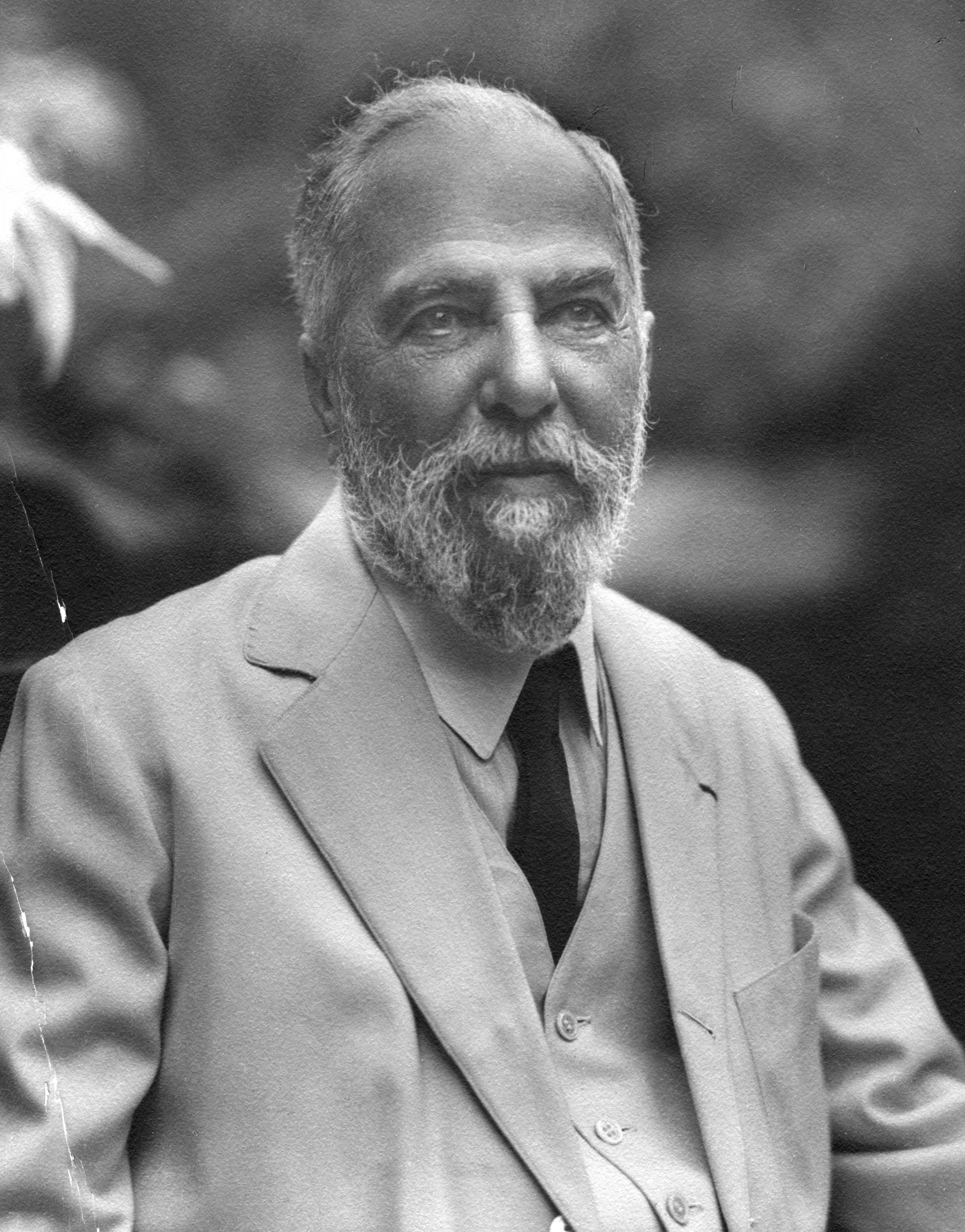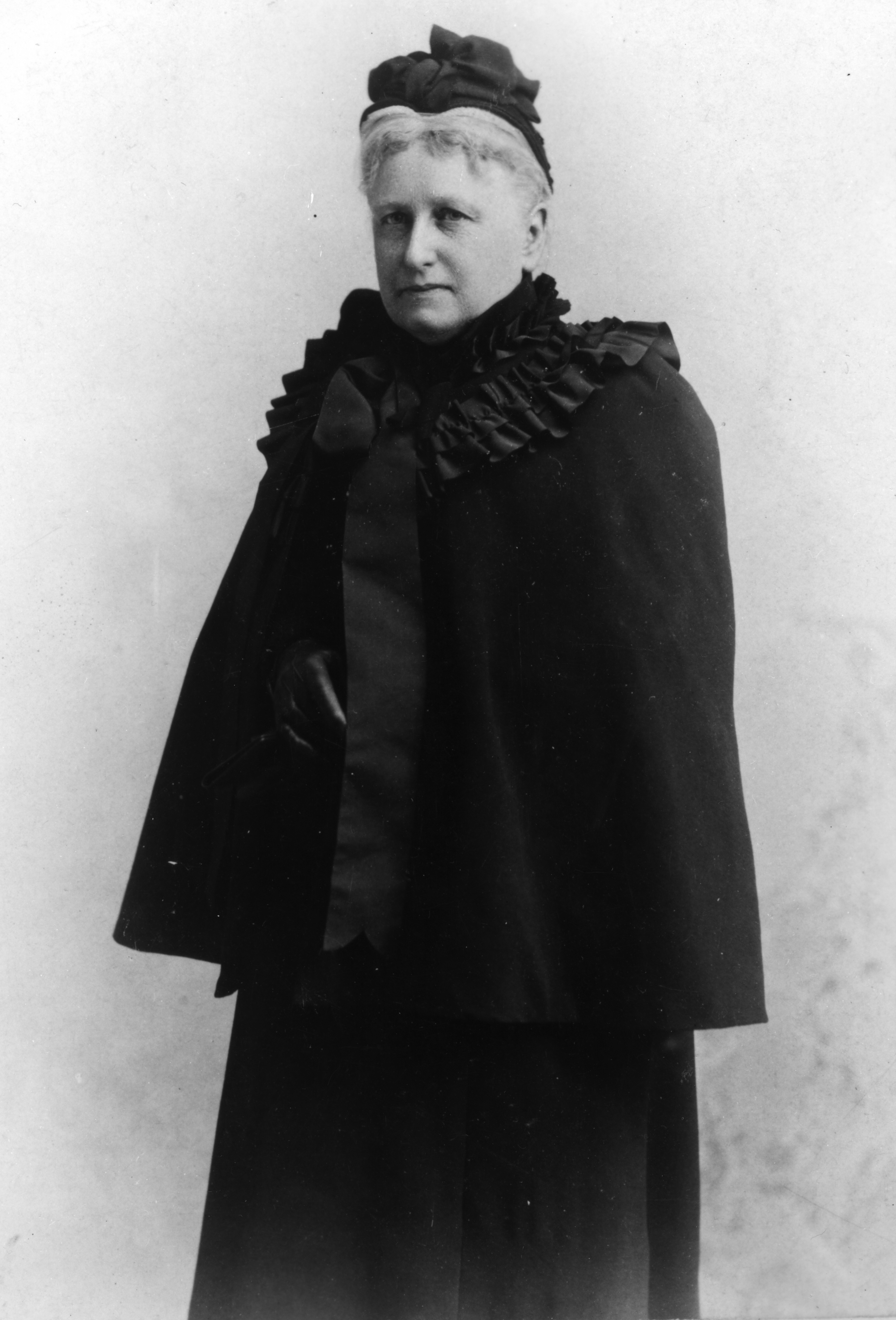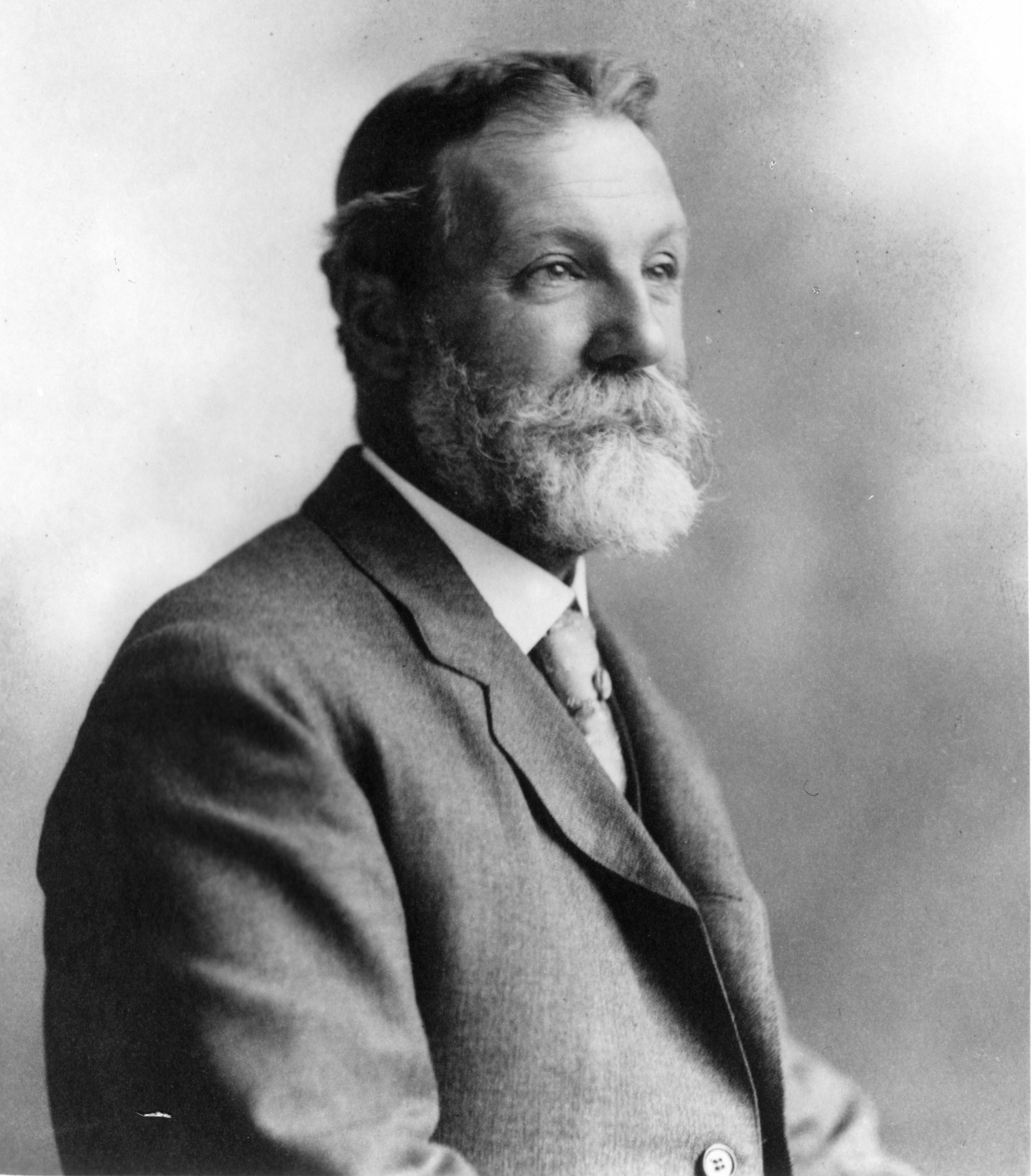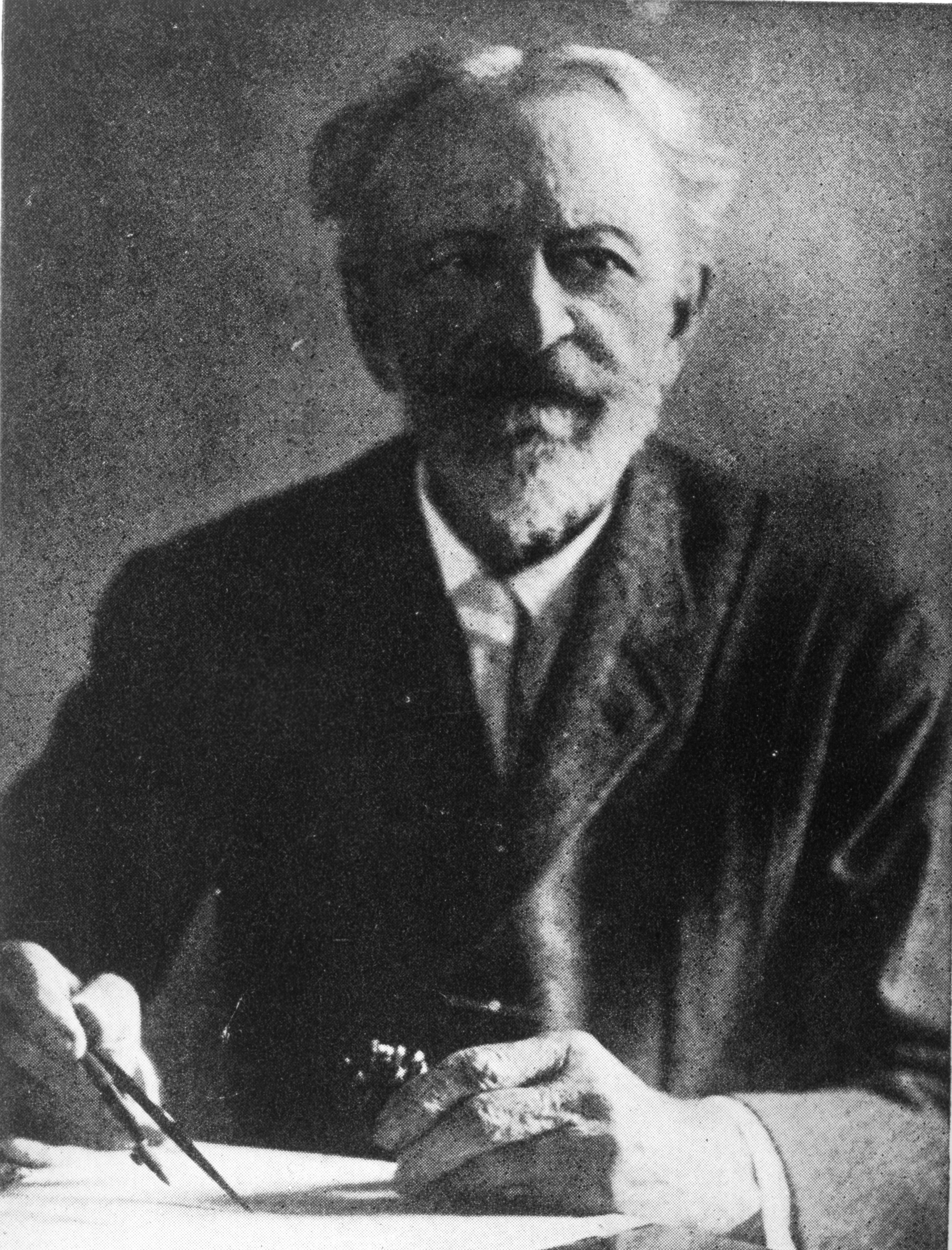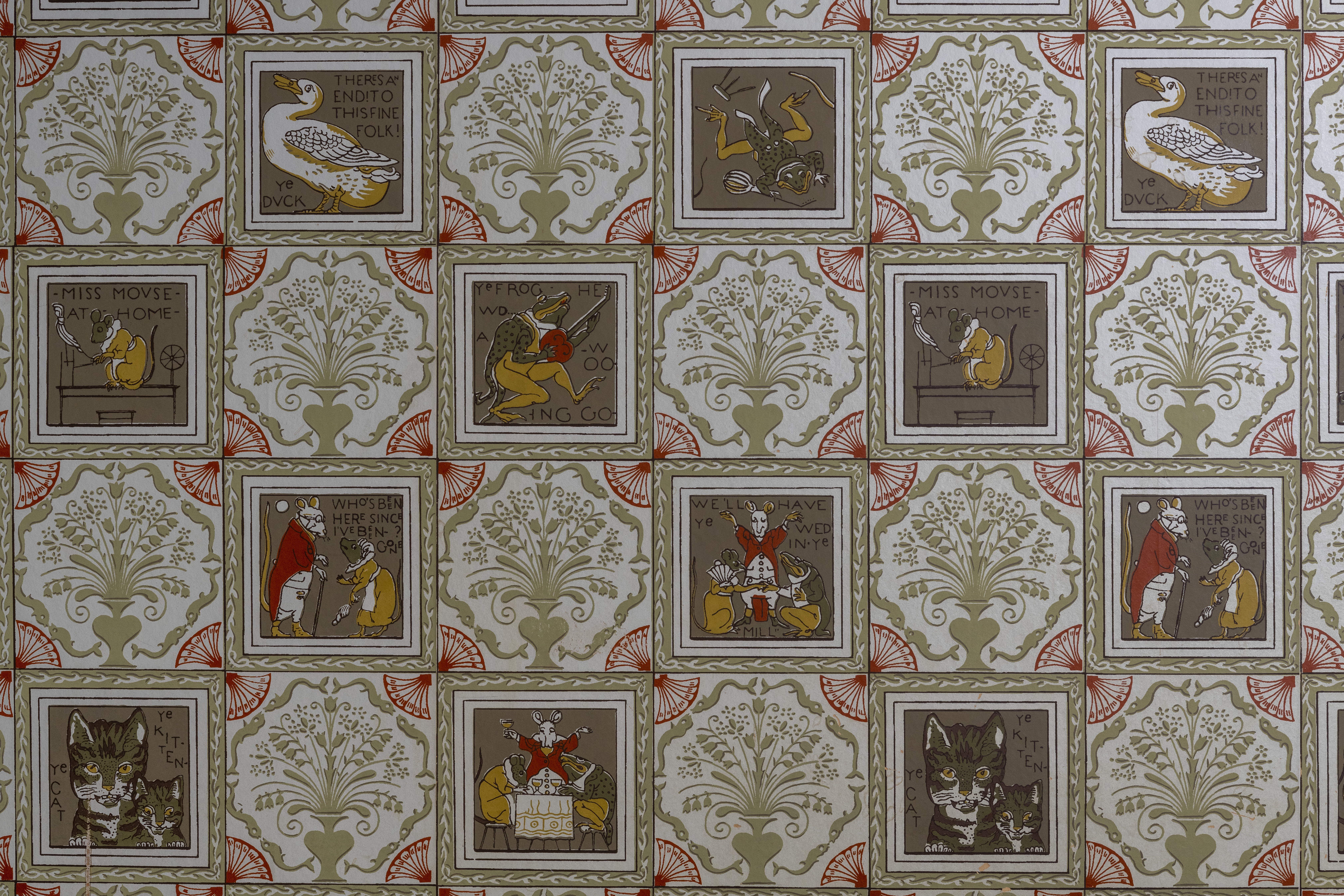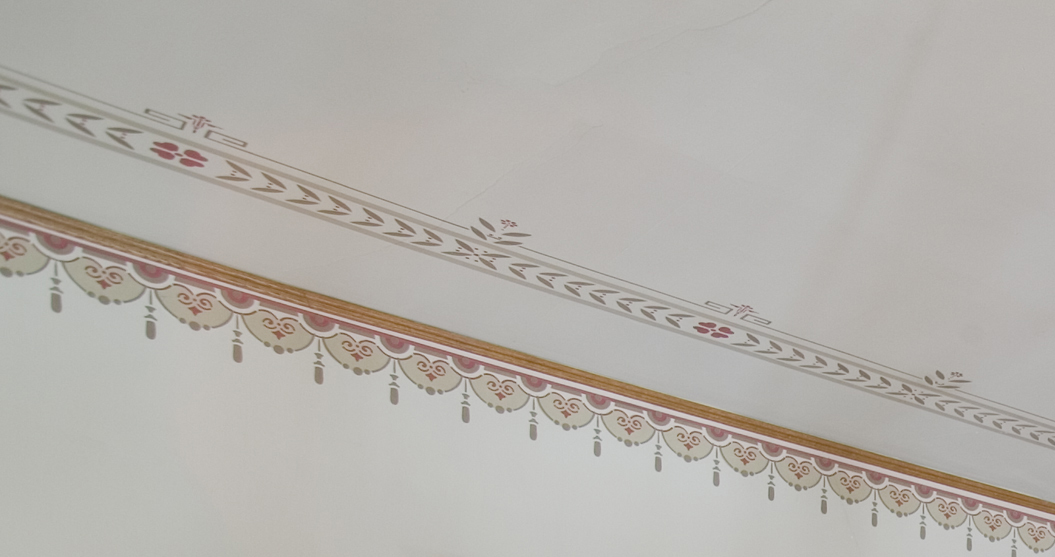Louis Comfort Tiffany (1848-1933)
Tiffany was the son of the founder of the great New York jewelry firm, Charles Tiffany, but seems to have been more fun than his somewhat strait-laced father, frequenting the nightspots of Broadway with the architect Stanford White—who designed the Washington Square arch, and was later shot to death by a jealous husband—and James Steele Mackaye, a theater manager, playwright, actor, and inventor who devised the idea of folding theater seats. In 1879, Tiffany founded a firm called Associated Artist with a small group of similarly minded designers—Samuel Colman, Lockwood de Forest, and Candace Wheeler. Tiffany’s surviving letter serving as a contract with Clemens was quite unspecific: “Walls papered and stenciled . . . Ceiling papered and stenciled in metals . . . Woodwork, decorated or not, at our option.”
Associated Artists disbanded after a short tenure, but they did have other important commissions, including the Madison Square Theater (for Mackaye), the Officers’ Room at the Seventh Regiment Armory on Park Avenue, and a room in the White House. (Associated Artists’ 1885 work was removed by President Theodore Roosevelt less than two decades later, when the building was restored in its original Federal style – at that point the lavish Victorian stained glass screens were out of place.)
Tiffany went on to pursue his interest in glassmaking – the work for which he is best known. He established the Tiffany Glass Company in 1885, eventually employing more than 300 artisans. His stained glass windows and lamps are famous, but his firms also produced pottery and other furnishings. On his father’s death, he was appointed the first design director and vice president of Tiffany & Co. While the jewelry firm survives today, Tiffany’s own glass creations were no longer fashionable in the 1910s and 1920s, and the Depression led to his company’s demise.

